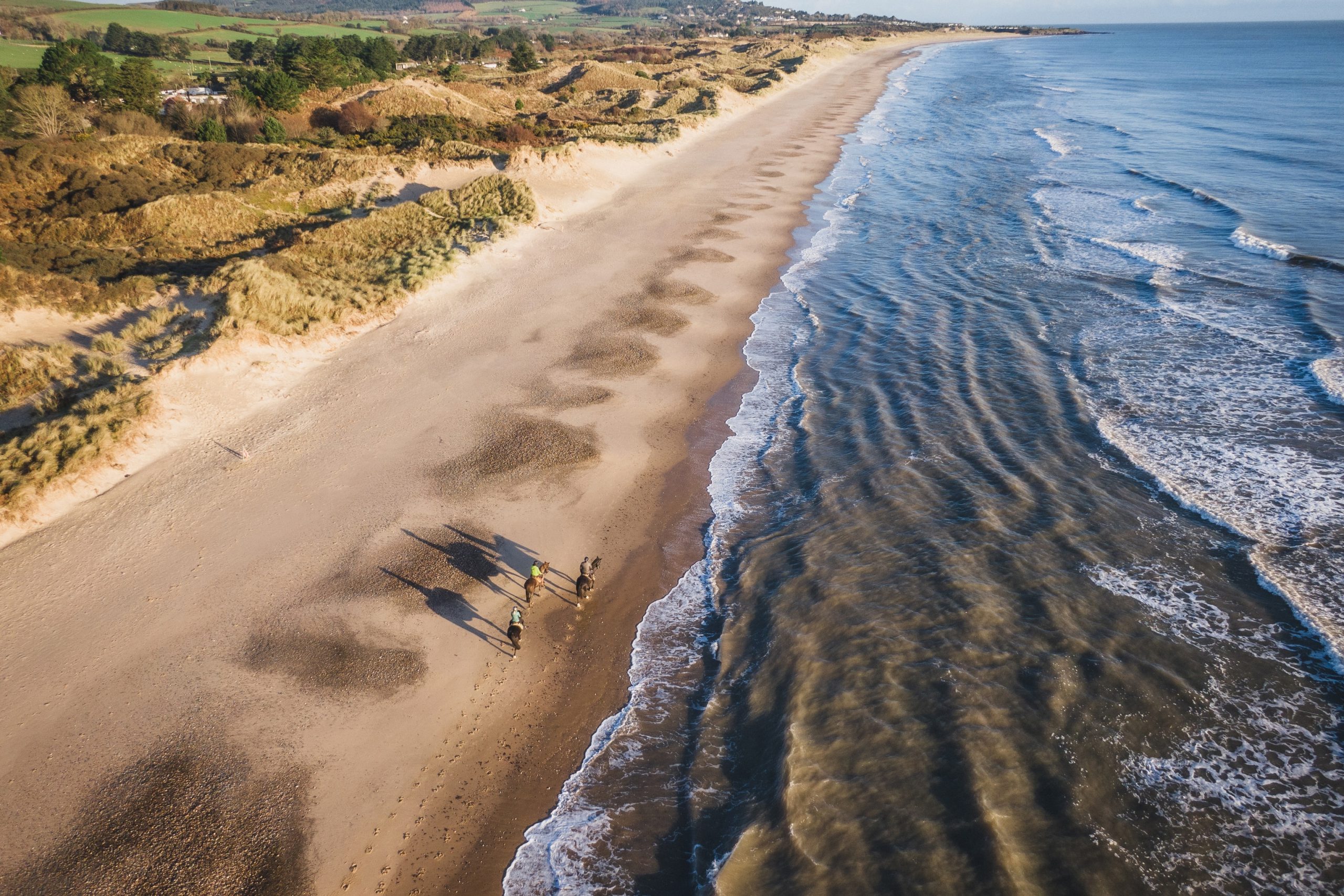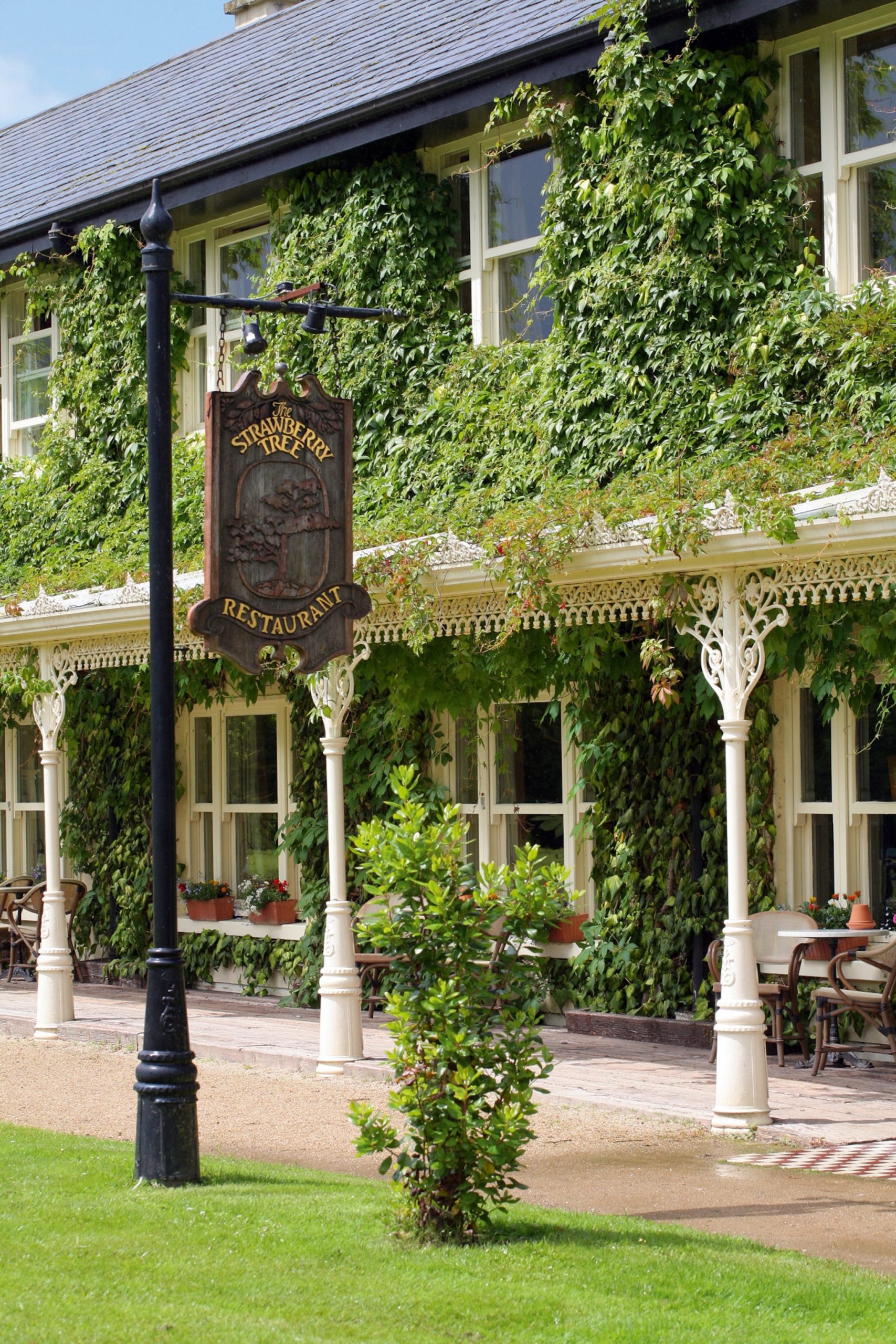
The ‘Garden of Ireland’ is a fabled landscape of rivers, forest walkways and smugglers’ coves where visitors can forage, wild swim and follow woodland paths to monastic ruins.
Read online at nationalgeographic.com
To drive south of Dublin and cross into County Wicklow is to be confronted, almost immediately, with some of the most soaring, timeless scenery the Emerald Isle has to offer. This is the ‘Garden of Ireland’: a forested realm of steep, glacial valleys that climb dramatically to the stark uplands of the Wicklow Mountains. Its beauty has made it a site of pilgrimage since ancient times — between the sixth and 12th centuries, the valley of Glendalough was home to one of the most powerful and learned monasteries in all Christendom.
Today, walkers flock to Wicklow to tackle sections, if not all, of the Wicklow Way, an 82-mile trail that snakes through the county’s centre. Along the way, it offers detours to spectacular aristocratic country piles like Powerscourt House & Gardens or horticultural wonders such as the National Botanic Gardens, Kilmacurragh. A groundswell of civic pride and investment over the past decade has led to the launch of new tours and attractions, including the multimillion-pound Beyond the Trees aerial forest walkway. Meanwhile, on the coast, pretty towns with sandy beaches offer surfers and swimmers access to the Irish Sea, their streets paved with tales of smugglers, Vikings, rebels and poets.
Day 1: Sea to summit
Morning
Kissing the county’s northern border with Dublin is the lively beach town of Bray, its promenade stretching a mile between the mouth of the River Dargle and a rocky headland once notorious for smugglers’ caves. Strap on a life jacket for a sea kayak lesson with Bray Adventures. Paddling out from the harbour, the instructor paints a picture of Bray’s 19th-century heyday as Ireland’s most glamorous seaside resort, pointing out landmarks such as Oscar Wilde’s birthplace. The final destination is a set of rugged sea stacks home to nesting guillemots, cormorants and kittiwakes. Lunch awaits in the town of Greystones — The Happy Pear serves hearty plant-based curries and soups, plus vegan desserts.
Afternoon
Drive to Powerscourt House & Gardens, one of eastern Ireland’s most impressive and storied estates, in Enniskerry. The 18th-century Palladian manor is merely set dressing for the main event: 47 acres of landscaped gardens. Beautifully arranged beneath grand terraces and framed on the horizon by Wicklow’s Great Sugar Loaf peak, the grounds offer up ornamental lakes and follies to rival the grander palaces of continental Europe. Self-guided audio tours tell the history of Ireland through the triumphs and tragedies of this great house. Later, drop in at the on-site whiskey distillery, or follow the road four miles south to visit the spectacular 398ft-high Powerscourt Waterfall, Ireland’s highest cascade.
Evening
A groundswell of interest in the great outdoors since the pandemic has made Wild Summits’ night hike and history tour of Glendalough the company’s most popular offering. The most sensational pocket of Wicklow Mountains National Park, Glendalough is home to the ruins of a grand monastic city. Founded in the sixth century, it grew in size and ecclesiastical might to become one of the major centres of learning in the West, before falling into disrepair and being burnt down by the English in 1398. Setting off before dusk, Wild Summits’ guides take hikers though the ruined abbey, around the twin lakes and up into mountains populated by sika deer — a nearly nine-mile walk that ends with a headlamp-lit scramble back to the car park.

Day 2: Foraging & fine art
Morning
Take a guided walk with self-taught foraging expert Geraldine Kavanagh of Wicklow Wild Foods. Walking along the banks of the Avonmore River near Rathdrum, basket in hand, Geraldine identifies nettles, nuts, berries and more, sharing their nutritional properties, as well as recipes to try and local folklore. You can also see her work in the gin made by Glendalough Distillery, an award-winning local company a 25-minute drive north of Rathdrum, for which she provides seasonal foraged botanicals. For a homemade lunch, drive on west to Roundwood Stores; the high-end grocers-cum-cafe sells all manner of artisanal produce and has a charming outdoor patio.
Afternoon
Wicklow’s most far-flung attraction is 18th-century Russborough House, which sits amid the Blessington Lakes on the border with County Kildare. It’s reached by an hour-or-so drive over the undulating plateaus of the Wicklow Mountains. Guided tours of the interior show off hand-sculpted ceilings, marble fireplaces and mahogany staircases — plus, a cornucopia of tapestries, silverware, clocks and oil paintings collected on Italian tours by the first owner, Dubliner and brewing heir Joseph Leeson. Important works of art were added in the 20th century by new owner Sir Alfred Beit, including Thomas Gainsborough’s portrait of Madame Baccelli, which has miraculously been returned to the collection three times following dramatic art heists.
Evening
Wrap up a trip to Wicklow at Strawberry Tree, Ireland’s first and only restaurant certified by the Organic Trust. Whether you go a la carte or opt for the 10-course tasting menu, each playful dish is a masterful expression of the current season using Irish produce. Most ingredients are grown on neighbouring organic farms or collected by in-house foragers, creating dishes such as sika venison tartare with fermented turnip and bilberry followed by wild woodruff creme brulee. There’s also an onsite deli, bakery and smokehouse. Linger longer by booking into BrookLodge & Macreddin Village, the refined 89-room, four-star hotel that’s housed the restaurant since 1999; doubles start at £125.
Three more immersive nature experiences
1. Wicklow Forest Bathing
A new and welcome addition to Wicklow’s portfolio of nature activities, forest bathing classes in Ballygannon Wood, just north of Rathdrum, were launched by Netherlands-born Cathelijne de Wit in 2021. Forest bathing, or shinrin-yoku, is a Japanese meditative practice designed to combat stress by inviting participants to focus on the sensations of being among trees; the ‘bathing’ is metaphorical. Cat takes participants on a slow, mindful walk, prompting them to engage with the details of nature through tasks, exercises and sharing circles — although, in her words, she says she lets the forest do most of the talking. Sessions end with a picnic of natural teas and snacks foraged for the occasion.
2. Beyond the Trees at Avondale Forest Park
Avondale House has a long and important history as the family seat of Wicklow’s most famous son, the great 19th-century nationalist and orator Charles Stewart Parnell. After a sensitive restoration of the Georgian main house, tours launched in the summer of 2023. But the true gem of the Avondale estate is its new mile-long wooden aerial walkway — an accessible, buggy-friendly architectural wonder that takes travellers 75ft above the valley floor to interact with the canopies of oak, larch, fir and even giant redwood, and teach them about forestry. Visits culminate at the 125ft-high spiral tower from which adults and children alike can descend by slide.
3. National Botanic Gardens, Kilmacurragh
While the historic gardens here are most famous for the Broad Walk, a boulevard of yews and rhododendrons that becomes carpeted in crimson petals each April, there’s plenty else to discover year-round — in particular, species from China and Chile collected both by Victorian ‘plant hunters’ and more recently by head gardener Seamus O’Brien. Kilmacurragh’s great house, dating from 1697, stands in ruins but a €14m (£12.2m) investment project is now underway to restore it. Meanwhile, 53 acres of grounds were replanted and opened to the public in 2023. Tours depart at noon and 3pm between mid-March and mid-October, and can also be requested in winter.

Top three animal attractions
1. Wicklow Equi Tours
With hour-long tours tailored to each rider’s experience and bespoke, cross-country horse-riding trips also on offer, this working stables on the edge of the Wicklow Mountains is the place to saddle up and explore the landscape. Riders are matched to one of 35 horses — all Irish cobs, Irish sport horses or thoroughbreds — and taken through forests or onto the sands of Brittas Bay.
2. K2Alpacas
This farm hosts a variety of interactive experiences with its herd of 80 fluffy, Andean camelids. They offer a Prosecco Trek, where guests walk the friendly alpacas up to a viewpoint to enjoy a drink, learning about the animals and the area along the way. The farm also opened seven elegant self-catering cottages on the property in 2022.
3. Falconry Ireland
Travellers can learn about the ancient field sport of falconry at this centre in Woodenbridge, with experiences that include seeing Harris’s hawks, lanner falcons, turkey vultures, black kites and owls in their element. Walk out into the surrounding woodland with seasoned falconers whose birds demonstrate flying and hunting. Finally, end up in the Woodenbridge Hotel & Lodge, Ireland’s oldest inn dating back to 1608, for a meal.
Five places for wild swimming
1. Wicklow
The eponymous county town sits on a stunning stretch of coast, settled by the Vikings in 795. Descend from the clifftop ruins of Black Castle, built during the 12th-century Norman invasion, to Travelahawk Beach below.
2. Clara Vale
For a blissful river dip, head to the old stone Clara Vale Bridge and park by Saint Patrick’s and Saint Killian’s Church. From the grassy verge, it’s easy to scramble down into the shallow waters of the Avonmore and wade upstream, admiring the trees and dragonflies.
3. Brittas Bay
Wicklow’s most famous beach is this three-mile smile of white sand backed by ecologically significant dunes, grasses and ferns. It has Blue Flag status and lifeguards during summer high season, making it perfect for bathing, bodyboarding and more with the family.
4. Meeting of the Waters
The intersection of the rivers Avonmore and Avonbeg offers picnicking facilities amid lush forest. Swimming here’s a right of passage; it’s where Irish poet Thomas Moore was inspired to write the popular ditty, The Meeting Of The Waters, in the early 19th century.
5. Greystones
While the chi chi town’s South Beach is a scenic half-mile of pebble and sand, perfect for dips, locals instead go to The Cove. This shingle beach south of the marina hosts morning swimmers year-round who afterwards head to Rise at the Cove, a social enterprise cafe serving hot drinks with a portable sauna onsite.
Published in the Jan/Feb 2024 issue of National Geographic Traveller (UK)

